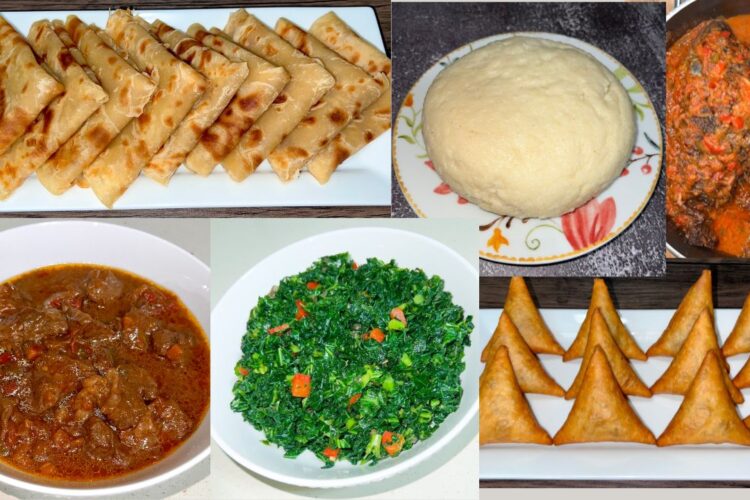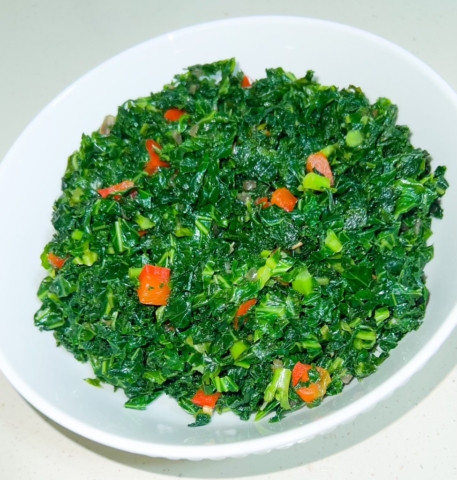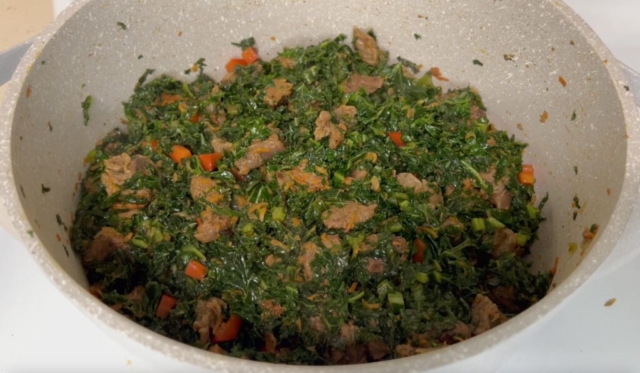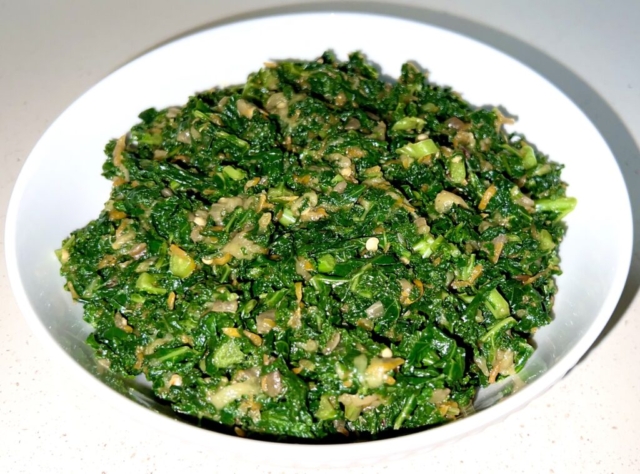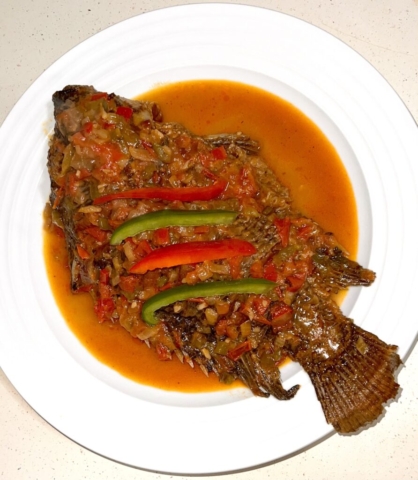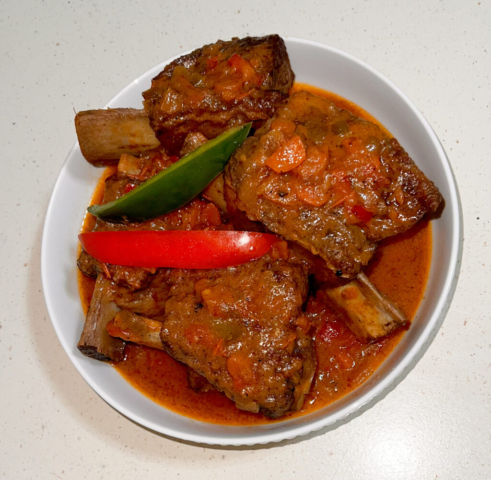This post may contain affiliate links, which means I may receive a commission from purchases made through the links.
Kenya is a culturally diverse country, and that diversity is well illustrated in the country’s cuisine which is a vibrant mix of flavors and ingredients. At the same time, numerous dishes are popular across the country that any visitor is sure to encounter if they visit. The following are the top fifteen must-try Kenyan dishes for anyone who visits Kenya.
#1. Nyama Choma
Nyama choma is Swahili for “roasted meat.” This is Kenya’s beloved barbecue, typically made with goat or beef, grilled over charcoal or an open flame. The meat may sometimes be marinated with garlic, lemon juice, and spices before grilling, but that is a less common practice compared to grilling plain meat. Also, as I mentioned in this article on comparing meat dishes in the United States and East Africa, the use of condiments and sauces such as barbecue sauce on grilled meat is not as common in Kenya. Nyama choma is often served with a side of kachumbari (tomato and onion salad) and Ugali.
Nyama choma is popular throughout Kenya, from urban areas like Nairobi to the rural regions. It is enjoyed during social gatherings, but it is also available as a regular menu item in most restaurants. Nyama choma is also a beloved dish during special occasions such as when one is hosting important guests at home. This dish is a must-try if you visit Kenya.
One thing to note about Kenyan meat is that it is generally much tougher s it is organic. Kenyans love it that way, but visitors may be quite surprised by how tough the meat is. Just a heads up.
#2. Ugali
Ugali is a stiff porridge made from flour and boiling water. The most common type is the white ugali which is made from maize (corn) flour. Flour from other grains such as sorghum and millet, as well as tubers like cassava, is also popularly used in some parts of the country, and these result in brown ugali. Ugali is made by cooking flour in boiling water, stirring constantly until it thickens into a dense, dough-like consistency. Ugali is typically served as a side dish. It pairs well with nyama choma, meat stews, and vegetables.
A staple food in Kenya, Ugali is consumed throughout the country and is considered a fundamental part of the Kenyan diet.
You can make Ugali wherever you are as its ingredients are readily available in many cultures. Check out my beginner-friendly recipe for Ugali as well as additional guidelines on all items you would need to make Ugali.
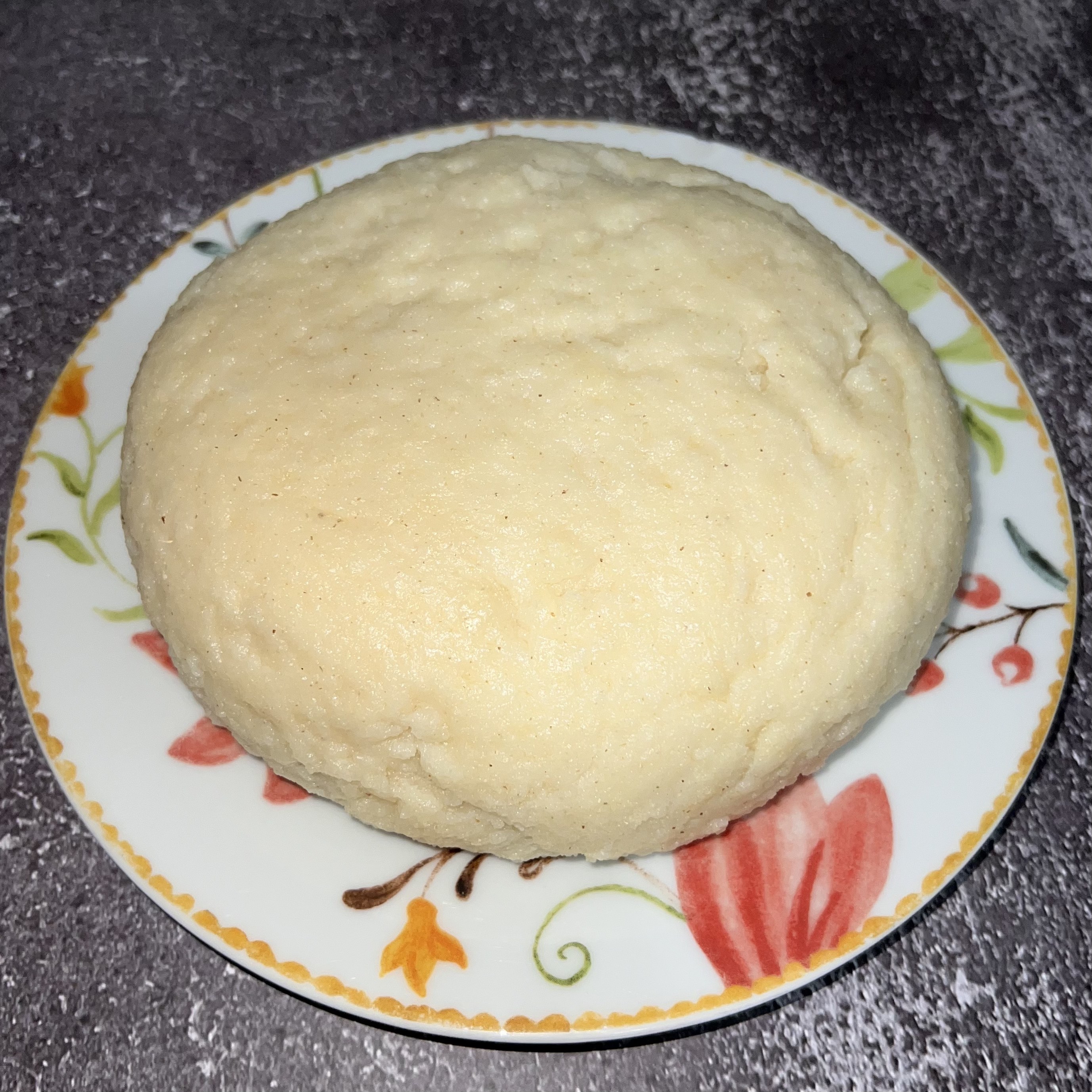
#3. Sukumawiki
Some translate sukumawiki to collard greens, and some to kale. Either way, it is a leafy vegetable that is extremely popular in Kenya. It is often sautéed with onions, and sometimes, tomatoes, beef cubes, and other spices may be added. Sukumawiki is nutritious and flavorful, and it is the most common accompaniment to ugali.
It is unheard of to eat raw sukumawiki in Kenya as I have observed people do in the United States. In Kenya, the dish is usually cooked until the greens are tender and the flavors are well combined with whatever spices are added to it. Other ways to cook sukumawiki, as I demonstrate in these recipes, include adding vegetables such as eggplants and carrots or cooking it with beef in one pot.
Definitely try sukumawiki if you visit Kenya. It is available in both urban and rural areas due to its affordability and nutritional value.
#4. Native vegetables
Other than sukumawiki, Kenyans also enjoy a variety of native vegetables such as managu, saka, mrenda, mirro, maseveve, mchicha, etc. These vegetables vary widely in taste, from mild ones like mchicha to wildly bitter ones like managu and saka. Regardless, they are all awesome accompaniments to ugali, rice, and other starches eaten in the country. Depending on which part of Kenya you visit, you are likely to encounter some but not all of these native vegetables. For instance, mchicha may be available across the country but saka and mirro are more of western Kenya vegetables. Just ask for mboga za kienyeji (local vegetables) and you’ll be given a list of what is available, as well as a prior warning if it is a bitter one.
#5. Meat and Fish Stews
Kenyan meat stews may look a little different from those I have seen in other cultures in regard to the choice of ingredients and their ratios to meat. A typical Kenyan meat stew is made with just onions and tomatoes. Carrots, bell peppers, peas, and potatoes may be added too but that depends on what side the stew will be served with. Stews that are meant to be served with ugali tend to use vegetables minimally so that the meaty taste is more prominent in the dish. Here’s my recipe for such a stew. However, those served with rice or chapati may include just as many vegetables as I see practiced here in the United States.
As for fish, it is often cooked whole as I demonstrate in this recipe and the eater has to sort the meat from the bones as they eat – something that is not common in all cultures. Should you visit Kenya as someone who’s never eaten fish like that, challenge yourself and have fun!
#6. Chapati
Chapati is a type of flatbread that’s soft, layered, and slightly flaky. Its dough is made from all-purpose wheat flour, warm water, salt, sugar, and vegetable oil. The dough is rolled out into thin circles and cooked on a hot pan until it is dotted with golden brown spots on both sides. Of course, the actual procedure is a little more detailed than that. Here are my recipes for the softest and tastiest Chapati: written recipe and video recipe.
Chapati is popular across Kenya and is enjoyed with meat, legumes, or vegetable stews. It is readily available in all restaurants, as a street food, as well as a special dish during ceremonies and gatherings. Make sure to try some chapati if you visit Kenya, or better yet, follow my linked recipes and try the dish out at home on your own.
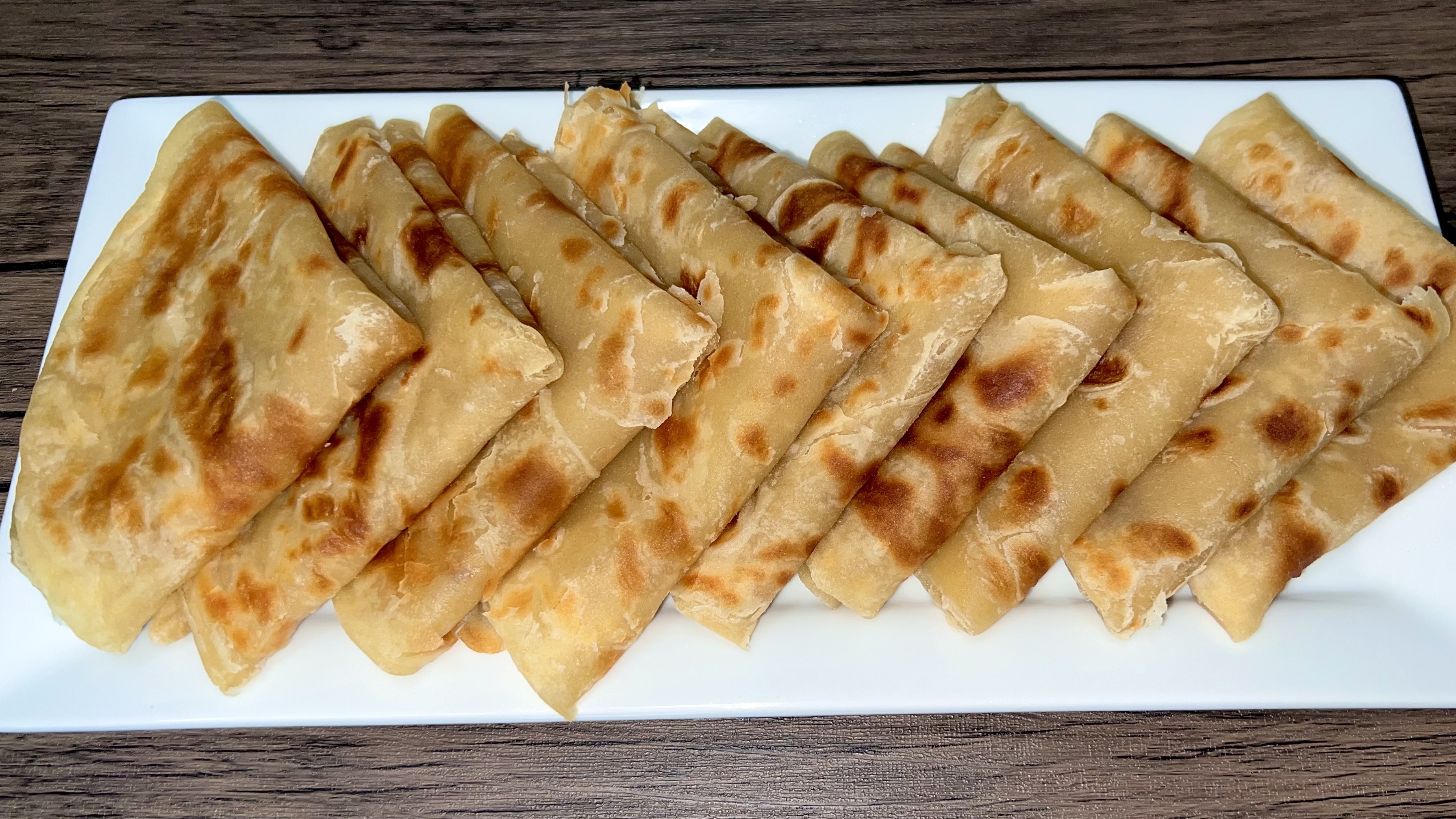
#7. Maandazi
Sometimes written as mandazi, these are slightly sweet, deep-fried doughnuts that are often enjoyed as a breakfast item or snack. They have a crispy exterior and a soft, fluffy interior. Maandazi dough is typically made from wheat flour, baking powder, water, sugar, and vegetable oil. To make them richer, one can add milk, eggs, butter, and spices like cinnamon, cardamom, lemon zest, etc. Maandazi dough is rolled out and cut into any shapes (circles, squares, and triangles are quite common) and deep-fried until golden brown on both sides. The result is a light, fluffy pastry with a sweet flavor. Check out my maandazi recipe.
Maandazi is enjoyed throughout Kenya, often as a breakfast item or daytime snack. It’s commonly found at roadside stalls, in small shops, and in bakeries in both urban and rural areas.
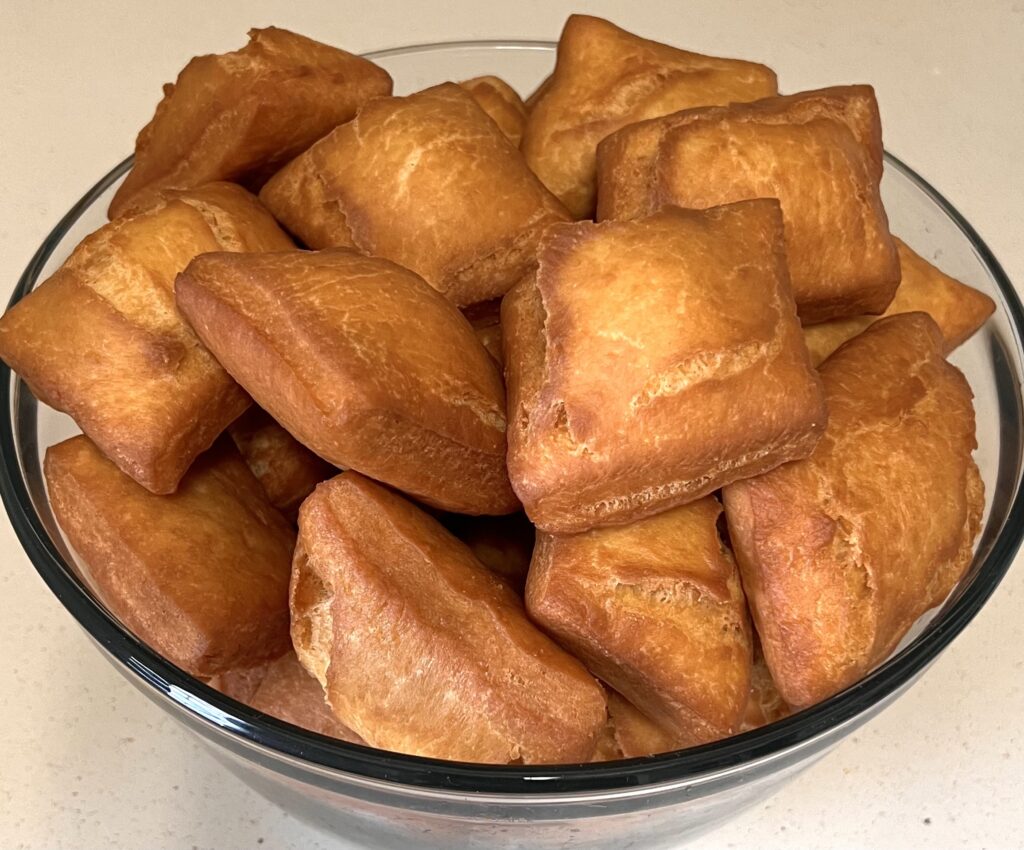
#8. Samosa
These are deep-fried pastries filled with spiced meat, potatoes, green grams, or other vegetables. Samosas are made by filling triangular pastry wrappers with precooked stuffing which is often a mixture of ground meat, vegetables, and spices. The filled pastries are carefully sealed and then deep-fried until crispy and golden brown. Samosas are available throughout Kenya. People make them in their homes, but it is also a common street food enjoyed as a snack. Some, especially in the coastal region of Kenya enjoy it with a spicy dipping sauce. It may also be served as an appetizer in some restaurants or as one of the main dishes at social events and gatherings. Here’s my samosa recipe video.
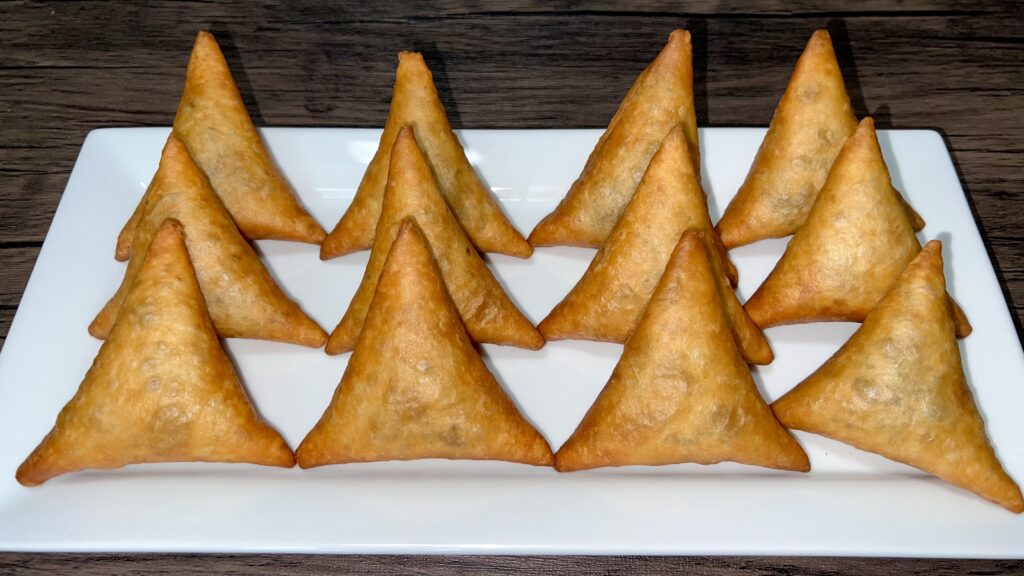
#9. Kenyan Pilau
Kenyan pilau is a spiced dish of rice and meat in one pot. Often, long-grain rice and beef, chicken, or lamb, are used to make pilau. Pilau masala, which is a blend of aromatic spices including cumin, cloves, cinnamon, black pepper, and cardamom is added for that signature fragrance and flavor. Pilau is especially popular in the coastal region of Kenya but it is also readily available in all other parts of the country. It is often also served as a festive meal and at special occasions such as weddings. Pilau is usually enjoyed with kachumbari or a simple cabbage salad, and a cold drink. Here are my recipes for beef pilau and chicken pilau.
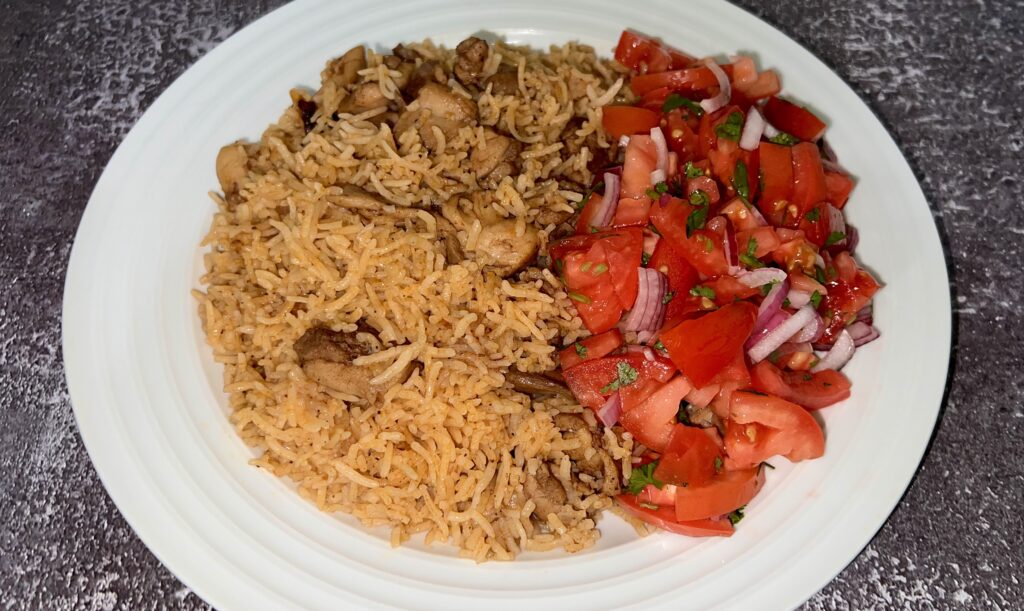
#10. Mutura
Known as Kenyan sausage, mutura is made from a mix of offal, minced meat, and spices, all of which are stuffed into a large cow intestine, boiled until cooked through, then grilled. It is then sliced and sold on demand. Mutura is a popular street food in Nairobi and other urban areas of Kenya. Kenyans enjoy it as a quick snack or during social events. Having a bite of mutura while visiting Kenya would be the ultimate authentic experience of local culture for any visitor.
#11. Matumbo
Matumbo is Swahili for both intestines and offal in general. Many Kenyans enjoy offal stews alongside meat stews as accompaniments for ugali, rice, chapati, and other starches. Matumbo stew is prepared in a similar manner as meat stew and in some cases, the two may be cooked together in one pot. Goat and lamb offal is often grilled alongside nyama choma while cow offal is commonly stewed. This is another dish that you must try while in Kenya, whether grilled or stewed. You will be amazed at how awesome it is!
#12. Githeri
Githeri is a one-pot traditional dish that is made from a mix of maize and beans. It can be seasoned with various spices such as Royco, chili, or curry powder and is sometimes enriched with meat or vegetables such as carrots, peas, and potatoes.
Because it is often made from dried grains, githeri takes a long time to cook and even when done, it can sometimes be chewy. Regardless, it is extremely popular in Kenya. Githeri is widely consumed across Kenya, but it is more associated with Central Kenya and the Kikuyu people where it is one of the traditional dishes. Owing to its affordability and nutritional value, githeri is the commonest meal in Kenyan institutions including schools.
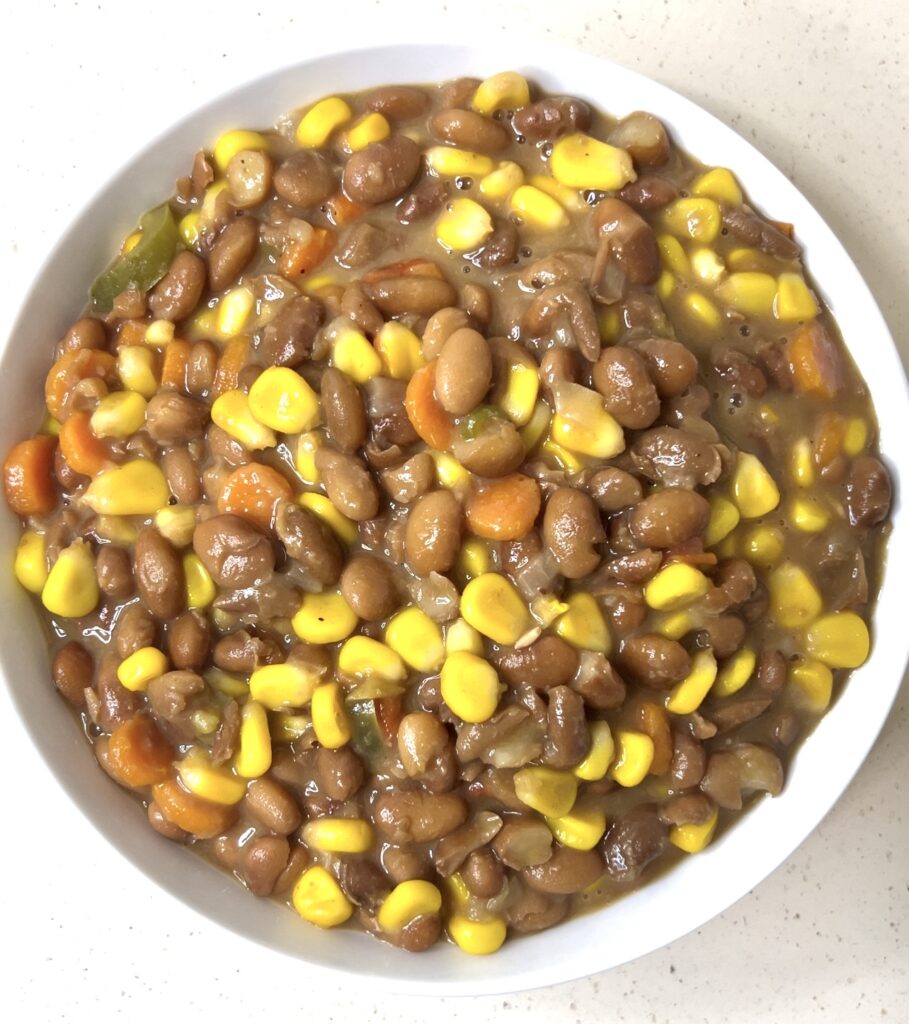
#13. Kenyan Mixed Tea
Kenyan mixed tea (also referred to as the African mixed tea) is typically prepared as a one-pot beverage. Water, milk, loose black tea leaves, and sugar are combined in one pot but in different stages as I demonstrate in this recipe. Spices like cardamom, ginger, or tea masala may also be added to enrich the aroma and flavor of the tea. However, this practice is more rapidly being replaced by the one where every ingredient is served separately for each person to make their own customized mix of the tea. Whichever way you go, make sure to try this Kenyan mixed tea, and who knows, you just might drop coffee altogether.
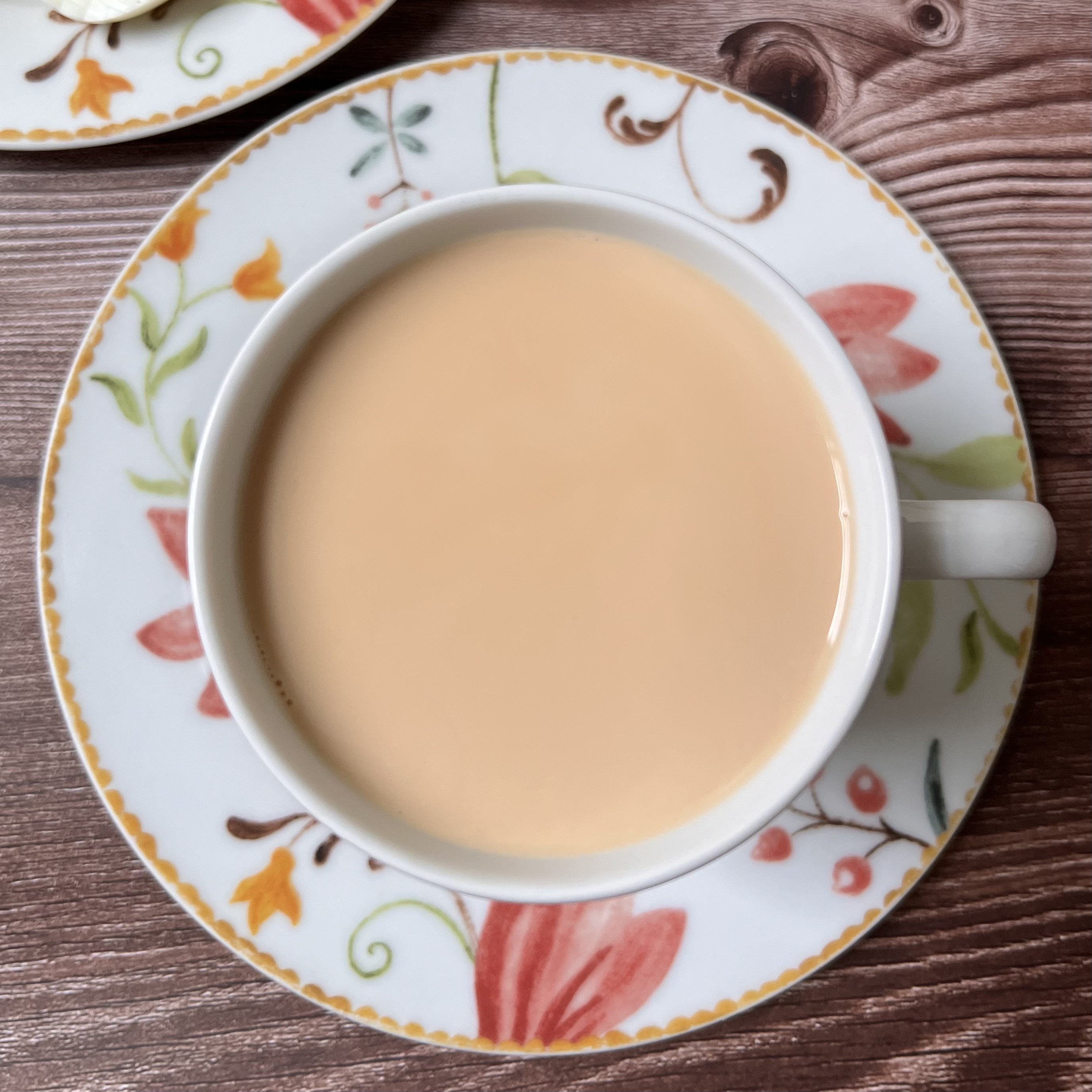
#14. Uji (Porridge)
Porridge in Kenya is made from maize, millet, or sorghum flour. To make porridge, flour mixed with water and simmered until thick, smooth, and cooked through. It’s often eaten for breakfast and can be enjoyed plain or with added milk, sugar, or lemon juice. Uji is commonly eaten throughout Kenya, particularly as a breakfast dish. It is served in restaurants as well as commonly made in households. Here’s my recipe for millet porridge.
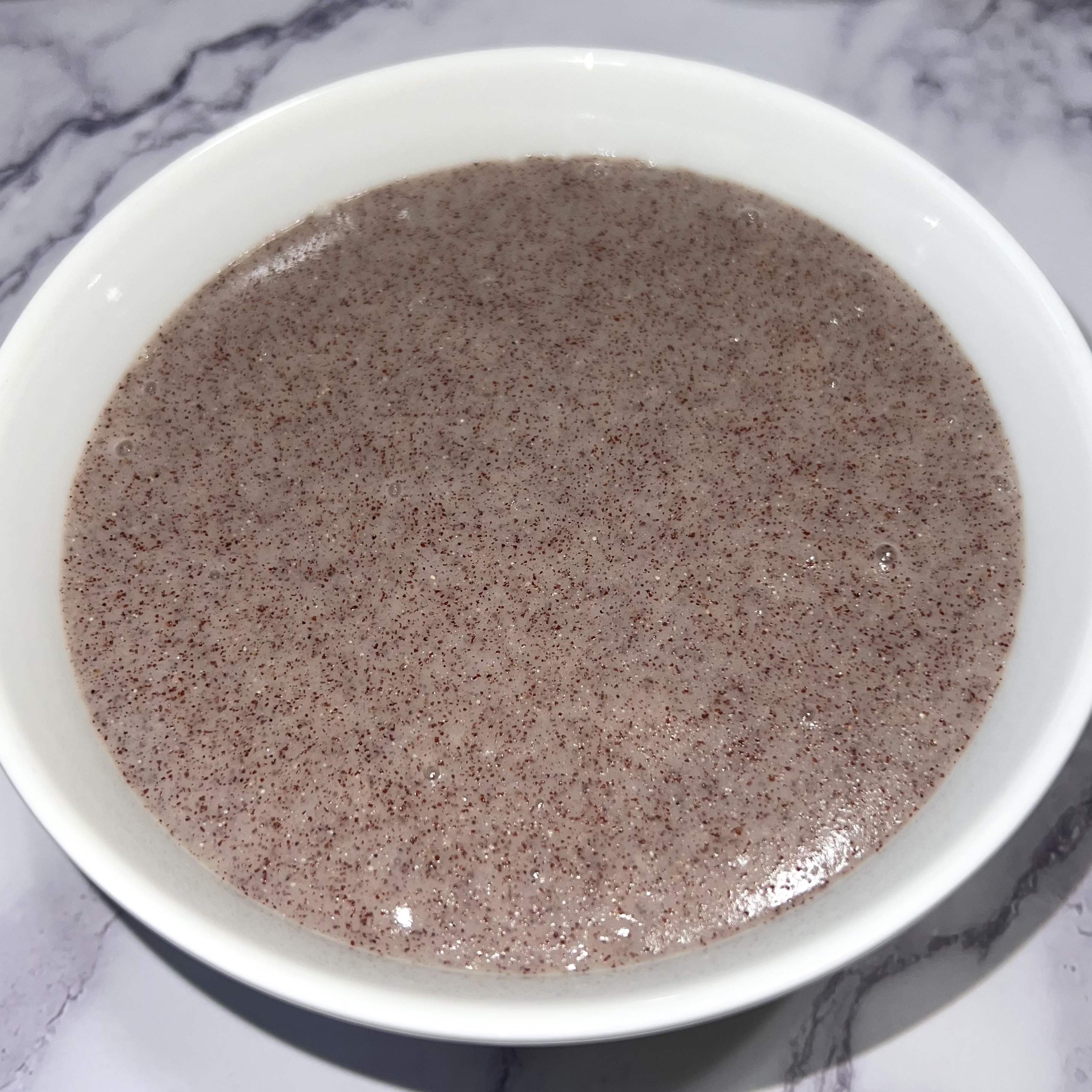
#15. Tubers and Root Vegetables
Last on my list, and certainly not the least, are the tubers that are popular in Kenya. These include Irish potatoes, sweet potatoes, arrowroots, and cassava to name a few. These tubers are central to Kenya’s diet as well and may be served in a variety of ways – from fries to stews or simply boiled food. It’s been a trend for quite some time now in Kenya for many people to prefer these tubers over bread and other wheat products for breakfast. Almost all high-end restaurants in Kenya will offer these tubers as accompaniments for breakfast tea instead of regular bread or maandazi. Should you visit Kenya, I am sure you will come across this. Take a bite and see how much you love them.
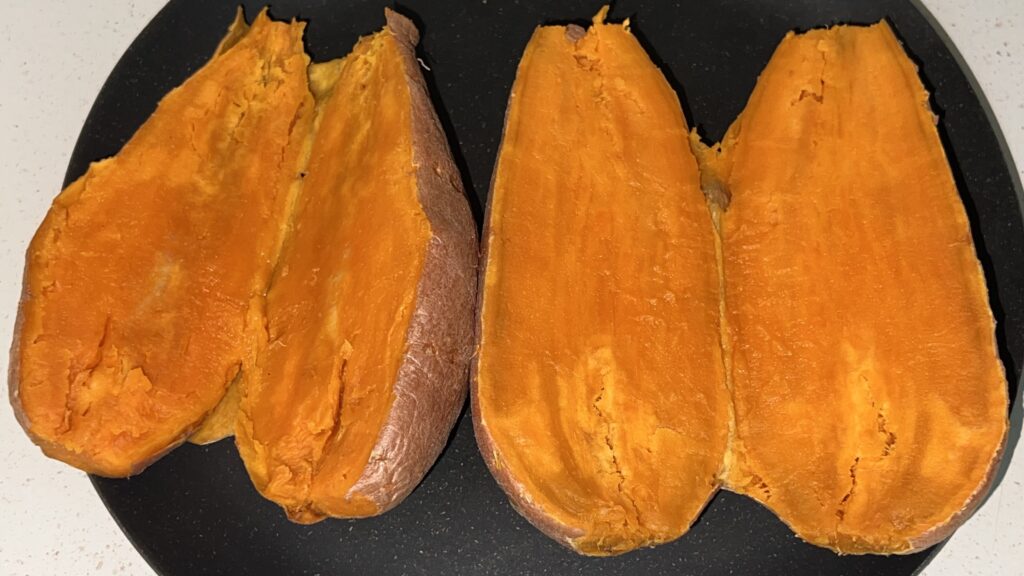
Conclusion
This list is not exhaustive by any means, but these dishes showcase the diversity and richness of Kenyan cuisine, offering any visitor a taste of the country’s cultural and regional variations. The dishes offer a glimpse into Kenya’s culinary traditions and are a great way to experience the country’s rich flavors and textures. So, now you know what to expect should you visit Kenya!
